10 Must Visit Sub-Antarctic Islands
Antarctica Antarctica from Australia and New Zealand Falkland Islands South Georgia
Antarctica is rightly a destination on many people’s bucket list. Antarctica’s mountainous landscapes, glimmering glaciers and imposing icebergs are truly breath taking. But Antarctica is also surrounded on all sides by sub-Antarctic islands. Most of them are mere specks in the Southern Ocean – not even shown on most world maps. You may ask – considering they are so small compared to Antarctica itself, why would you want to visit them?
Well there are a number of reasons. Firstly, many of the islands were used by the early explorers as staging points for their assault on Antarctica or just a bases for commercial activity such as whaling, sealing and fishing. This means that they contain some amazing historical buildings and relics.
Secondly, as they are Sub-Antarctic they have large amounts of vegetation. Although Antarctica itself does have some vegetation, it is very hard to find and generally quite small. Most Sub-Antarctic islands are far enough north of Antarctica proper that the climate allows for all number of plants to thrive: many of them unique to their host island.
Thirdly, the wildlife is very concentrated. As Antarctica is a huge landmass, the animals living there have large expanses of coastline to utilise. Most Sub-Antarctica islands are surrounded by the Southern Ocean in the middle of nowhere. And the Southern Ocean teems with fish and other marine life. This bounty attracts penguins and mammals such as seals to these sections of the ocean and although they have large feeding grounds – they still need to return to land, making these small islands probably the most concentrated wildlife sites in the world.
1. Illes Crozet, one of Sub-Antarctic Islands (France)
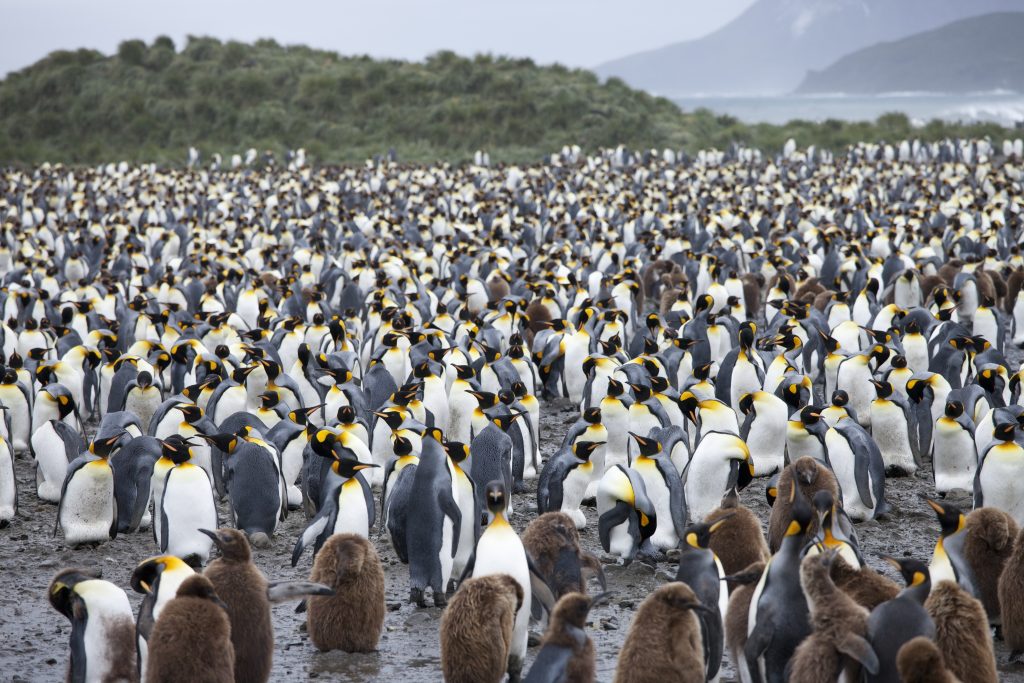
Lying far off Antarctica’s coast, roughly half way between South Africa and Australia is the Crozet Islands. The most remarkable thing about these islands is that contains almost half of the world’s King Penguin population, including the world’s largest King Penguin colony – with in excess of 1,000,000 birds.
The islands are cold and bleak but glacier free. Back in the 19th century the islands were a key part of the American whaling programme, with fleets of whaling ships working off the islands. The only human activity on the islands now is a single, small French research base.
Ease to reach: It is not particularly easy to reach at all. One or two cruise ships visit it each year as part of longer itineraries. These trips are also quite expensive – be prepared to pay in excess of $20,000 per person.
2. The Falkland Islands or Malvinas (United Kingdom, but also claimed by Argentina)

Must people will be aware of the Falklands because of the war between the United Kingdom and Argentina. In fact the islands have been fought over well before Margaret Thatcher took exception to the Argentinean invasion of the islands. The British prized the islands from the Spanish and French before them. Later the US and Germany had also had their eyes on the islands, mainly because of its strategically critical location near shipping lanes of the Drake Passage. In fact the islands were the location of major skirmishes between the United Kingdom and Germany in both world wars.
There are still some wreckage from these battles which can be viewed but it’s really the wildlife and people of the Falklands that are its main attraction. In terms of wildlife there are many of the animals of South Georgia, albeit in smaller numbers. The Magellanic, King, Rockhopper and Macaroni Penguins all nest on the islands.
The really unique thing though is the people of the Falklands. It has often been said that the people of the Falklands are more British than the British. On arrival in Port Stanley you almost immediately get a feeling for this. Union Jacks adorn people’s verandas, there are red phone boxes and a solitary red double decker bus. The only car dealership in town is Land-rover and pubs with names like “The Globe” serve pulled, warm ales!
Considering that most non-military visitors (i.e. tourists) enter the Falklands via a short ship journey from Argentina or even quicker flights from Chile and this is where the real contrast is. The many countries of South America certainly aren’t homogeneous but they all share a Latin heritage which is strikingly different from that of the British Falkland Islands..
In a way it’s one of the few places you can still visit where you can get a feeling for what it would have been like to be in an early British colony. The islands are still overseen by a Governor (who also covers South Georgia incidentally) and he still lives in the Governor’s House which overlooks Port Stanley. The town itself is still very small, with just over 2000 residents and you do get feeling of being at frontier town.
Ease to reach: Probably the easiest island to visit on this list because you can catch a commercial flight there from Santiago, Chile. Like South Georgia you can also do as part of an Antarctica cruise departing from Ushuaia. A number of ships operate Falkland, South Georgia and Antarctica Cruises although with prices starting around $15,000 per person, it’s not in everyone’s budget.
3. Bouvetoya (Norway)
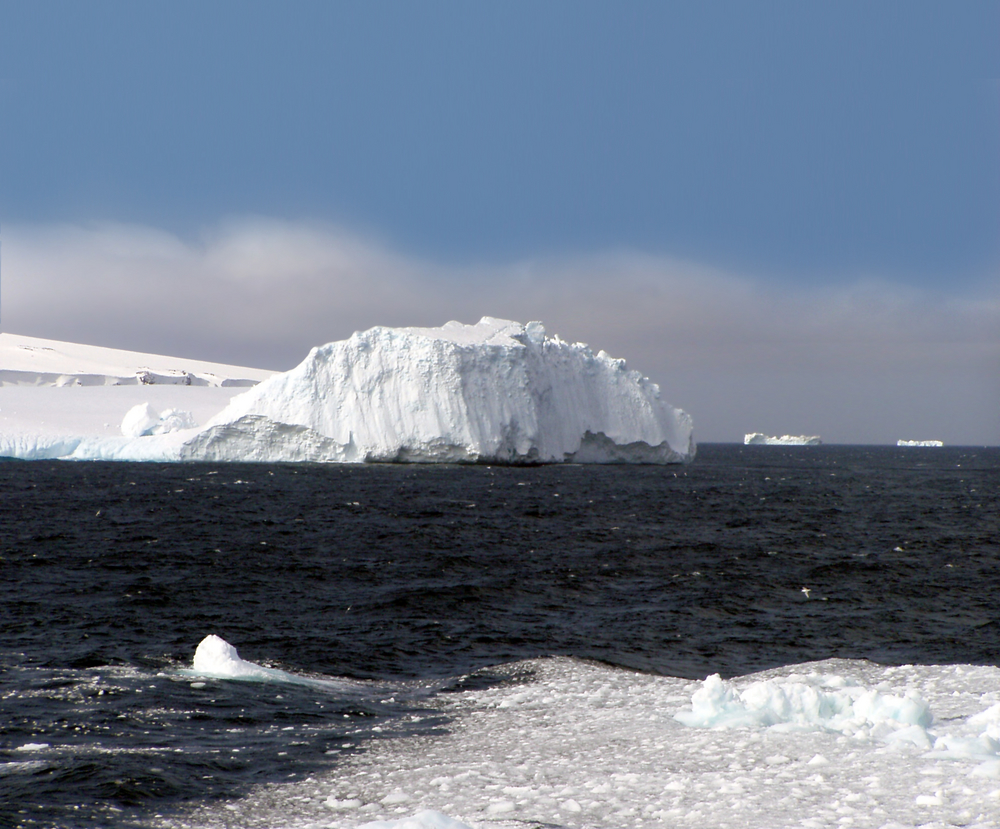
Said to be the most isolated island on the planet with over 1600 km to the nearest next piece of land. The island itself is somewhat unfriendly. The island is mostly covered in glaciers and where there aren’t glaciers there are high cliffs, making landings on the island hazardous. The island also has only a small amount of bird life and of often surrounded in mist. There are certainly Sub-Antarctica islands that have more to see but it makes the list just because of its amazing isolate.
No one ever seems to have been tempted to live on Bouvetoya. The island was originally found by a French expedition and subsequent visits from America and British expeditions didn’t inspire enough interest for settlements either. Eventually Norway decided to place an unmanned weather station on the island and it has been claimed as a Norwegian Island ever since. The name is a combination of French and Norwegian, combining the name of the original French explorer who discovered the island with the Norwegian ending for island (-oya)
Ease to reach: Bouvetoya it is not particularly easy at all. One or two cruise ships visit it each year as part of longer itineraries. These trips are also quite expensive, be prepared to pay in excess of $20,000 per person.
4. The Auckland Islands (New Zealand)
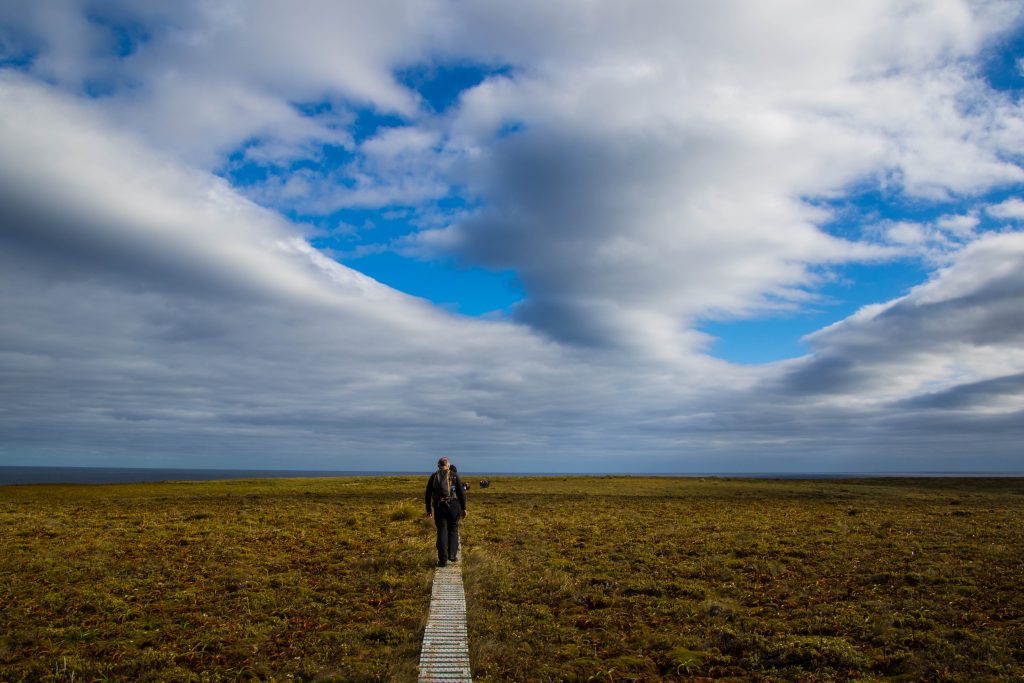
725 km south of New Zealand, this little group of islands isn’t actually so little – the islands are actually significantly larger than most other sub-Antarctica islands.
For decades after the islands were discover, its co-ordinates were show incorrectly on shipping charts, and as a result many ships ended up shipwrecked against the island’s towering cliffs. It actually got so bad that the New Zealand scattered shipwreck shelters around the island and undertook regular patrols of the islands to pick up shipwreck survivors. Among the shipwrecks was the infamous General Grant, which left Melbourne during the Victoria Gold Rush and was believed to be carrying tonnes of gold. The General Grant wreck has never been found.
The Auckland Islands were also the location of one of the shortest lived and disastrous British Colonial efforts. London based whaler Charles Enderby convinced the British Government to set up a colony on Auckland Islands and at its conception Enderby was granted the title of Lieutenant Governor (essentially giving the colony the same status as New Zealand, Australia or Canada) and via an advertising in campaign in London he found approximately 100 willing to take the voyage with him to the Auckland Islands and set up the colony.
The group set sail from London and quickly set up the buildings including the Governor’s House for Enderby. The core purpose of the colony was to provide support and be actively involved in the whaling industry in the Southern Ocean. Unfortunately for Enderby the whaling industry was declining in the area because of depleted whaling stocks. As a result the colony failed with two years and Charles was forced to not only give up his position as Governor but also his position in the whaling business.
Like most sub-Antarctica Islands, the Auckland Islands have a wealth of wildlife. The New Zealand (Hooker) Sea Lion is the world’s rarest Sea Lion and is scattered throughout the islands. Seven species of albatross including the Royal Albatross live on the islands as well as Yellow Eyed and Rockhopper Penguins.
The Auckland Islands also have the most diverse plant life of all the sub-Antarctic Islands with 202 native species. Summer time on the islands sees them come alive with colour when many of the islands’ mega herbs flower.
Ease to Reach: Probably one of the easiest Islands to visit given its relative proximity to New Zealand. That said, there are only limited departures each year, during the Southern Hemisphere Summer.
5. The Snares (New Zealand)
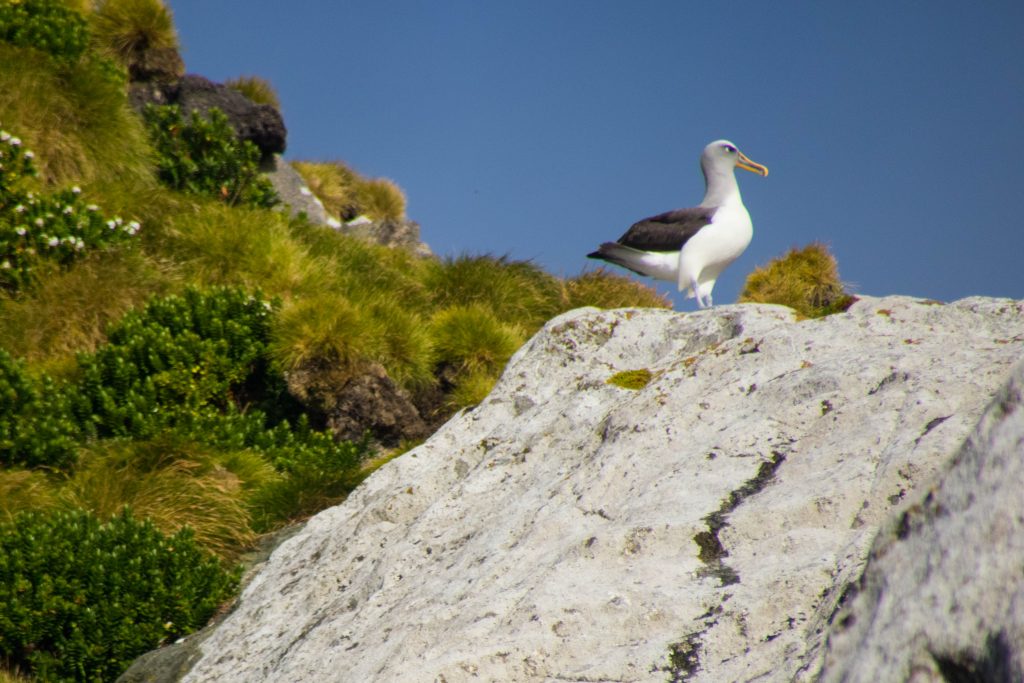
Considered to be part of New Zealand’s sub-Antarctic territory, it’s questionable if these islands should really be considered sub-Antarctica given their more temperate climate (Ave temp 11 deg C) and close proximity to the New Zealand mainland (or Stewart Island at least).
The name “Snares” was given to the islands because they were considered a shipping hazard. The island’s inhospitable shores and lack of safe mooring locations may have save the island. The Snares are possibly the only sub-Antarctica island group that has never been inhabited by humans (other than one short stint by four sealers) and never had any introduced species. The islands are considered to be a pristine wilderness area.
The Snares is also considered to have possibly the highest density of bird life in the world. This small group of islands has approximately 5 million birds, which is roughly equivalent to the entire bird population of the UK.
Sooty Shearwaters are the most populous bird but also prominent are Buller’s Albatrosses, Diving Petrels, Giant Petrels, Terns, Skuas and Gulls. The endemic Snares Crested Penguin also have large colonies on the islands. New Zealand Sea Lions and Fur Seals are also present on the island.
Most of the wildlife is concentrated on the east coast (leeside) of the islands and so it’s very easy to see almost all the animals mentioned above in these areas.
Ease to Reach: Probably one of the easiest Islands to visit given its relative proximity to New Zealand. That said, there are only limited departures each year, during the Southern Hemisphere Summer.
6. Elephant Island (No ownership as under the area covered by the Antarctica Treaty)
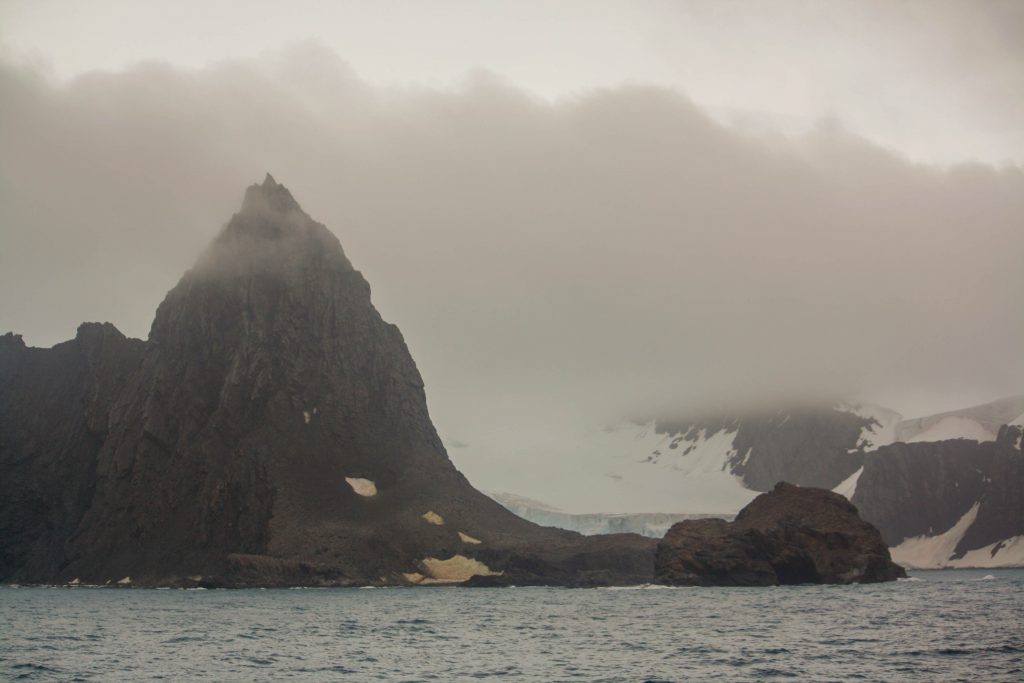
Named Elephant Island because it does somewhat resemble the head of an elephant on a map. This little, otherwise inconsequential island was a key site in the one of the world’s most remarkable survival stories – Ernest Shackleton’s Endurance Expedition. The island sit off the end of the Antarctic Peninsula’s tail, between the Weddel and Scotia Seas.
The island is important because it gave refuge to Shackleton’s men, just at the point they need. Shackleton’s ship had been stick in ice for an entire winter in the Weddell Sea, only to have the ship crushed by the moving ice at the end of the winter. As a result the men had to get in the ship’s row boats and row hundreds of miles before they finally hit land on Elephant Island.
Calling Elephant Island a refuge is possibly an overstatement as it’s a bleak and windy island. It did however give them enough solid ground to construct a makeshift hut from an upturned row boat and the penguins on the island gave them a source of food.
Shackleton and three of his men set off from Elephant Island in a row boat with a makeshift sail to try and get help from one of the whaling stations on South Georgia. After an eventual journey he finally reached the whaling station, the station master help Shackleton with a ship and they were back to Elephant Island and collected all the stranded men.
Ease to Reach: Relatively hard even though it’s in an area where many Antarctica cruise ships visit. The island is very difficult to land on and so very few cruise ships include it on their itineraries.
7. King George Island (No ownership as under the area covered by the Antarctica Treaty)

This little island is just off the coast of Antarctica, in the South Shetland Islands. It’s so close to Antarctica that it’s questionable if it should be in this list. It has been included because it’s essentially considered to be the “capital” of Antarctica. The island has the only non-ice runway in the Antarctic region and has the highest density of research stations on Antarctica.
In total the island has eight bases, which include Chilean, Brazilian, Argentinean, Russian Chinese and even Peru’s “Machu Picchu” base.
As a result of all the research stations this area has a wider range of facilities than most bases – from an indoor, heated basketball court to a Russian Orthodox church, complete with spiralling domes.
Ease to Reach: Relatively easy. Although there are no scheduled commercial flights to King George Island a couple of Antarctic Operators fly charter aircraft to the island and then transfer their passengers to a cruise ship. Most regular 10-11 Antarctica Cruises departing from Ushuaia are a reasonable chance of stopping at the island as part of their Antarctica itinerary too (although access would depend on weather and ice conditions at the time).
8. South Georgia (United Kingdom)
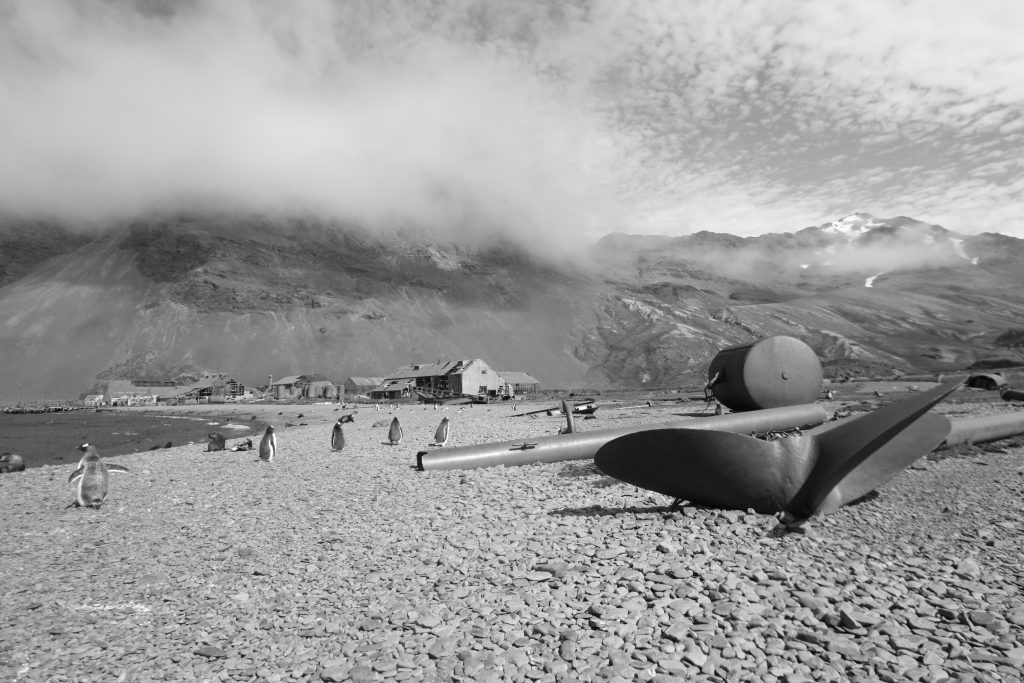
Rightly one of the most popular Sub-Antarctic islands from a tourism perspective. South Georgia is reasonably close to the Antarctic Peninsula, which is where most of the Antarctica Tourism industry operates. The island is also one of the largest Sub-Antarctica islands and also has some of the most varied and numerous wildlife. The west coast of South Georgia is rugged and as most weather systems in the Southern Ocean circulate in an easterly manner it means that the west coast of the island is generally hit with the full force of furious fifties and is a reasonably desolate place.
Fortunately the island is quite mountainous and these mountains protect the east coast of the island from these prevailing weather systems. As a result the east coast of the island is covered in wildlife. Seals and Penguins litter almost every available beach on the east coast of the island. Smaller islands just off South Georgia such as Bird Island and Prion Island are also key Albatross nesting sites too.
The rising seabed also push large amounts of minerals to the surface which results in a huge quantities of marine life – which in turn attracts large pods of whales from time to time.
In addition to the wildlife, this eastern coast was also an attractive landing site for humans. There are a number of disused whaling stations and currently used research stations on the eastern coast. Ernest Shackleton used Grytviken and Stromness whaling stations as a staging point for two of his expeditions, including the famous Endurance expedition. Sadly, while at South Georgia on his second expedition he suffered a heart attack. Shackleton was buried at Grytviken station and his gravesite can be easily visited there.
Ease to reach: Relatively easy provided you have a reasonable budget. A number of ships operate Falkland, South Georgia and Antarctica Cruises. With prices starting around $15,000 per person, it’s not in everyone’s budget though.
9. Macquarie Island (Australia)
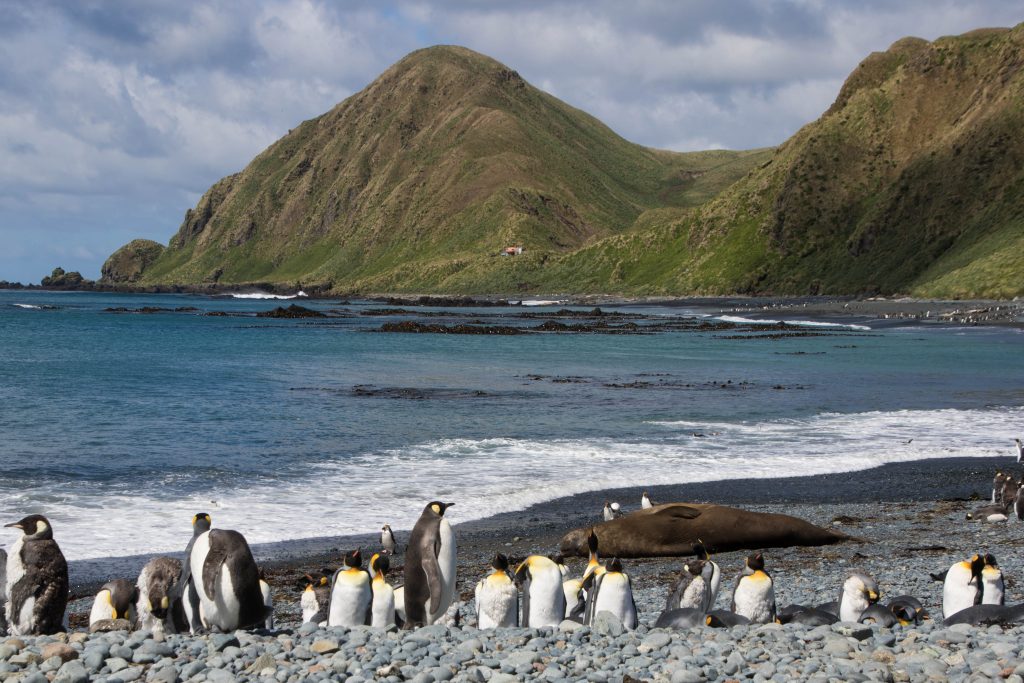
In some regards this island is comparable to South Georgia. The island is long and thin like South Georgia and is at almost exactly the same latitude. Similar to South Georgia, Macquarie Island is well vegetated and has large populations of Seals, King Penguins and the endemic Royal Penguin.
In other ways the island is quite different. Despite its towering cliffs neither side of the island is protected from the winds like the eastern side of South Georgia.
But it’s Macquarie Island’s geology which makes it unique and why it makes this list. Most isolated islands are forms from layer after layer of underwater volcanic eruption, until inevitably the eruptions break the water’s surface and form an island. And when I say most remote islands – I mean every island on the planet other than Macquarie Island. Macquarie Island has been formed by two underwater plates pressing against each other and “pushing” the seabed above the ocean – in a similar way to toothpaste being squeezed out of a tube.
This may not seem that remarkable in itself but just consider that every other isolated island you may visit is just cooled volcanic lava. On Macquarie you’re standing on what was the ocean’s seabed! As this is the only place you can view the ocean’s floor without getting in a deep water submersible vehicle, it is also very helpful for scientists.
Ease to Reach: Relatively easy provided you get on one of the few departures that leave for Macquarie Island every year. Visitor numbers are limited to 500 people a year.
10. Deception Island (No ownership as under the area covered by the Antarctica Treaty)
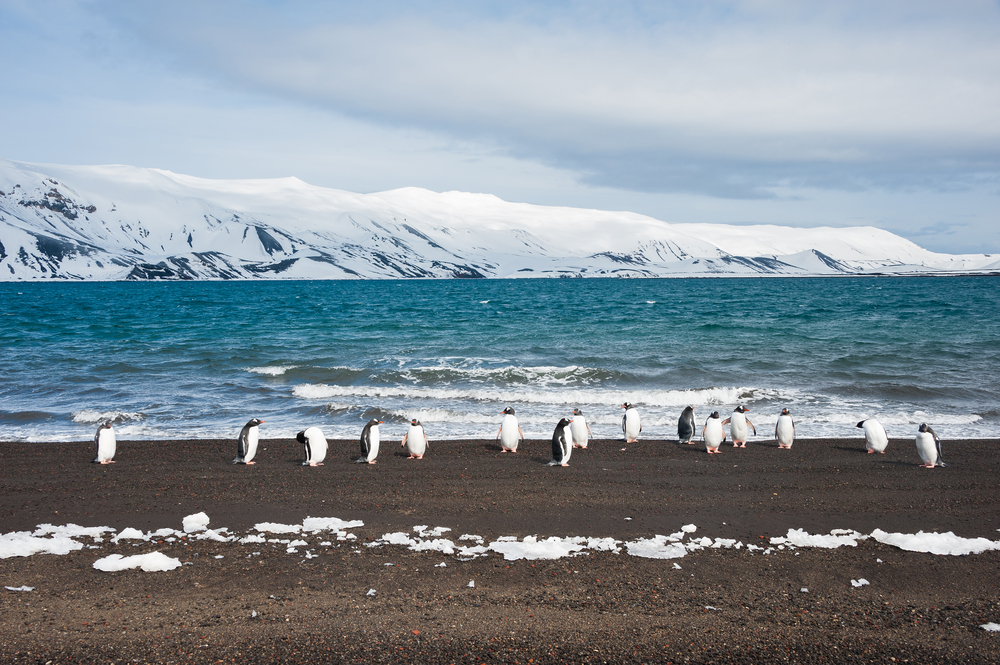
Another island in the South Shetlands, Deception island is spectacular because of it’s a fortunate makeup. The island is the caldera of a collapsed volcano, however there is a small gap on one side of the volcano (called Neptune’s Bellows) where small ships can pass through. Once inside into the caldera it is possible to dig holes in the beaches’ black sand and effectively create a natural Jacuzzi. The heat from the underlying volcanic activity warms the sand and water – truly a unique natural experience for such a frozen continent.
There is also some considerable history associated with the island. Neptune’s window, atop the southern side of the volcanic rim is reputed to be the location where the Antarctica continent was first viewed, by American Nathaniel Palmer (you may recognise his name from the America Antarctica Base within the South Shetland Islands). The islands was also used as a whaling station and the remnants of the station can still be seen on the beaches today.
Ease to Reach: Relatively easy. Most regular 10-11 Antarctica Cruises departing from Ushuaia are a reasonable chance of stopping at the island as part of their Antarctica itinerary (although access through Neptune’s Bellows would depend on weather and ice conditions at the time).
Chimu Adventures offers cruises to all of these destinations. Click here for more information about these destinations or get in touch with one of our friendly Destination Specialists who are on hand to help you plan your trip to Antarctica. For more information about Antarctica visit our Antarctica Hub, it is our a central resource point for all things Antarctica. Whether you’re wanting to learn more about Antarctic ships, plan a trip to Antarctica or just read some fun articles about Antarctica, this is the place to visit.

Talk to one of our experienced Destination Specialists to turn your Antarctic, Arctic and South American dream into a reality.
Contact us